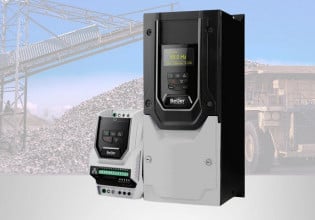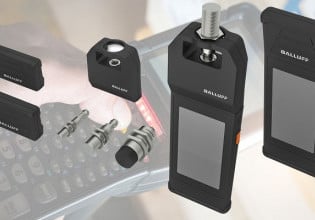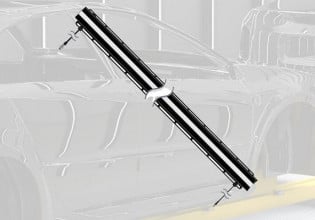Contactless Power and Signal Transfer: Turck Inductive Couplers
Turck has recently developed an inductive coupler device that will transmit power and signals wirelessly to nearby devices, excellent for non-contact sensing applications with motion between parts.
An inductive coupler is a pair of devices that work together to transmit electrical signals over an air gap. This technology is similar to the inductive charging technology in cell phones, only instead of just power alone, it’s also possible to transmit communication I/O signals or protocols such as IO-Link.
In an industrial setting, the real power of this technology shines in non-contact, high-speed systems such as conveyors that have moving pallets, like the B&R Acopos track or the Acopos 6D planar system. These systems could have inputs and outputs directly on the pallets if they can make use of an inductive coupler. Turck, a supplier of many different automation devices, has recently announced its inductive coupler.

Inductive coupling allows power and data transfer across an air gap. Image used courtesy of Turck
NIC Series Inductive Coupler
All inductive couplers involve a pairing of two components, and the NIC series is no exception. First, there must be a primary device, the NICP (standing for ‘non-contact inductive coupler - primary’), which supplies the power and is attached to the fixed side of the tooling. The NICS (secondary) receives the power from the primary and transmits data to outputs and actuators that are connected to the secondary. Sensors connected to the secondary will also transmit signals back to the primary.
The NIC series can transmit up to 18W of power across a maximum 7 mm air gap. The couplers are both SIO (standard I/O) and IO-Link compatible, allowing for a bidirectional exchange of data. The body of the coupler is an M30 x 1.5 thread with a locking nut provided. The electrical connection uses an industry-standard M12 4-wire connector.
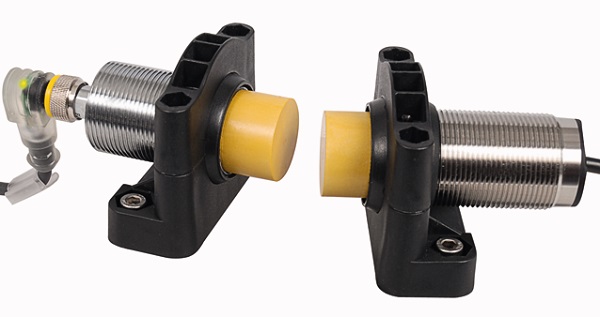
Inductive couplers can be mounted at offset angles, within limits as provided in the datasheet. Image used courtesy of Turck
The couplers can be operated in one of two modes: SIO or IO-Link mode. With standard I/O (SIO) mode, two sensor inputs or one output signal, in either NPN or PNP configuration, are transmitted through the coupler. The choice of NPN or PNP is determined through a setting during initial setup. Once a load is connected to pin 4 of the secondary, the second input is deactivated.
In IO-Link mode, devices that are IO-Link capable can be connected directly to the secondary coupler. The primary side can be connected to an IO-Link master. The secondary does not support IO-Link master connectivity.
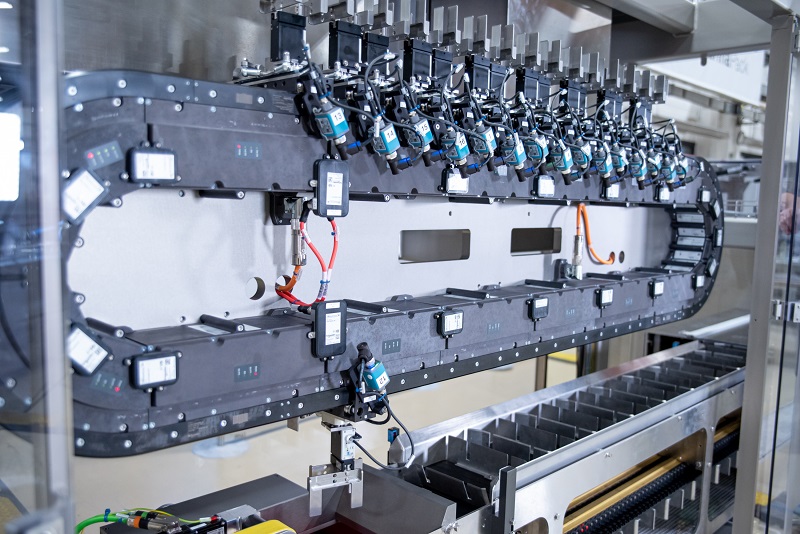
Magnetic conveyance can make excellent use of non-contact data and power transfer. Image used courtesy of CoreTigo
Wireless Connectivity for Tooling
Without considering inductive coupling, any clamping or tooling that is required on pallets in a conveyor system must be manual because we cannot run wires and cables to all the pallets while they are moving around the conveyor. With an inductive coupling system, we can transmit input or output signals across an air gap, thus allowing for wireless tooling.
An application example could be sensing and clamping on a pallet that moves around a servo conveyor system. The pallets offer a platform for tooling and nesting of the parts. To facilitate rapid motion, clamps need to be added to the pallets, but these clamps require both sensing and actuation. By using an inductive coupler at the station, we can easily control the clamps and read their position. Once the station work is complete, the pallet can simply be commanded to leave the station without having to release any cables or connectors.


